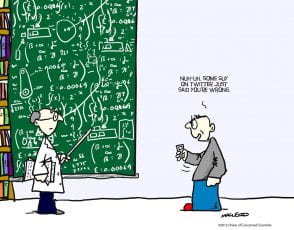Reflective Practice

The 21st-century learner is bombarded with vibrant, disorderly and often chaotic streams of information, delivered to them via multiple platforms. Students today might be digital natives, but that does not mean that know how to judge quality information. Learning needs to be a collaborative effort between students, as well as between student and teacher. Information Literacy (IL) and IL models help to guide students through the process of discovery and to make judgments into the quality of the resource. My own learning of IL has developed significantly over the last 11 weeks while undertaking my masters. I went from considering the Teacher Librarians (TL) role in curriculum planning as an afterthought, seen in my blog post Understanding the role of TLs in school on March 3rd, to ensuring that assessment 3 was aligned with current school needs.
Information literacy is a basic human right, as set down by the Alexandria Proclamation (United Nations Education, Scientific and Cultural Organisation, 2005). Every person needs to have the tools to navigate the digital landscape of today. IL models help to provide that knowledge. FitzGerald (2016) identifies the skills required of a 21st-century learner and they include being digitally fluent and a critical thinker. This understanding is a huge jump for me as initially, I struggled to even define what IL meant. The blog writing process itself proved helpful here. As I reflected on my learning, I was able to consider the elements that resonated with me. This is evident to me in my blog post Information Literacy on April 18th. I was able to define what IL was and I can see evidence of my growing understanding of its relevance to my TL practice.
CILIP Information Literacy Group (2016) defines IL as the ability to think critically and make balanced judgments about any information we find and use. IL gives us the skills to navigate information. IL models, on the other hand, provide a process to assist in learning these skills. There are many IL models and thorough investigation is required by a TL to decide on the most appropriate one to use in their school’s context. When I began my reading into IL models the first one that jumped out at me was Six frames for information literacy education: a conceptual framework for interpreting the relationships between theory and practice (Bruce, Edwards & Lupton, 2007). I believe I gravitated to this model as I am primarily teaching the Victorian Certificate of Applied Learning (VCAL) program and this is very much project-based learning and correlates strongly to Bruce, Edwards and Lupton’s model (Kuhlthau, Caspian & Maniotes, 2015). I do discus this further in my blog post The TLs role in Information Literacy on April 19th, but reflecting on that post, I see I was naïve to not consider how I as a TL, could collaborate with other teachers using an IL model.
The most significant element I have learned is to read and read some more, and then when I take a break from reading, go talk to people, namely classroom teachers at my school. As mentioned I initially questioned my role as a TL in the inquiry learning process, but after reading through the various articles attached to module 5 on the various IL models, I began to have a better concept of the role I could potentially play. That of collaborator and partner, an integral part of helping learners move into the third space, where the student’s world and the world of curriculum, come together to allow the students to create world views of their own (FitzGerald, 2016). I came upon the Guided Inquiry Design (GID) framework developed by Kuhlthau, Maniotes, and Caspari (2012) in one of the readings. Further investigation led me to my own school libraries catalogue. It turned out that not only did we have copies of the text, but it was well borrowed amongst the faculty. I got in touch with the Humanities faculty head teacher and she was able to provide me with her wishes for a unit of inquiry using the GID-model as its base.
As a consequence, I centred my topic around World War 1 for my assessment 3 piece, as this aligned with the schools need. The faculty head has yet to read it, but I hope that it will prove useful and I will have the opportunity to join the teaching team as the TL and be responsible for the information literacy skills. I believe this knowledge of IL and IL models will be useful to me as a practitioner because I am now better able to visualise my role as a TL more clearly.
References
Bruce, C., Edwards, C., & Lupton, M. (2007). Six frames for information literacy education. In S. Andretta (Ed.). Change and Challenge: Information Literacy for the 21st Century. DOI:10.11120/ital.2006.05010002
Fitzgerald, L. (2016). Does Guided Inquiry Enhance Learning and Metacognition? Synergy, 14(1). Retrieved from https://search-informit-com-au.ezproxy.csu.edu.au/fullText;dn=216728;res=AEIPT
Kuhlthau, C. C., Maniotes, L. K., & Caspari, A. K. (2012). Guided Inquiry Design: A Framework for Inquiry in your School. Santa Barbara, CA: Libraries Unlimited.